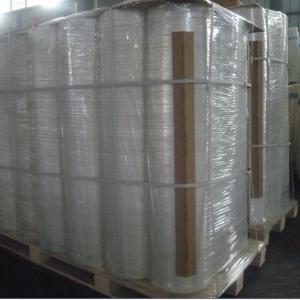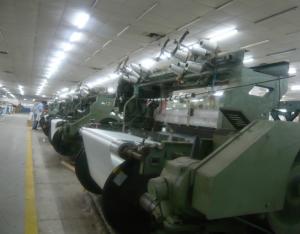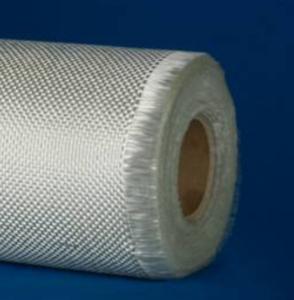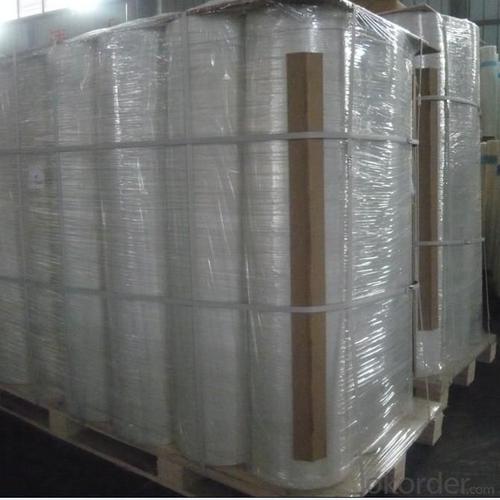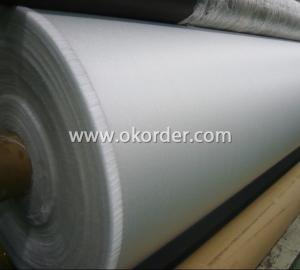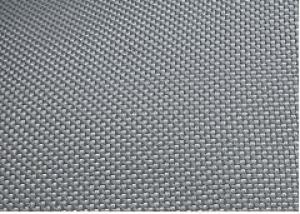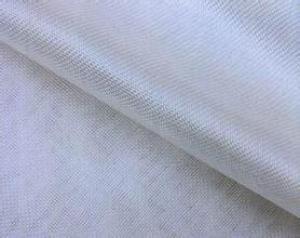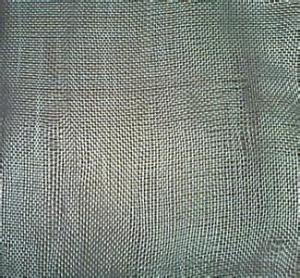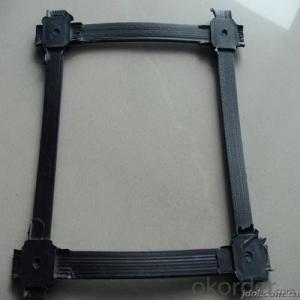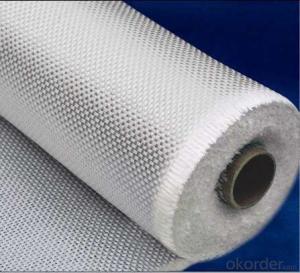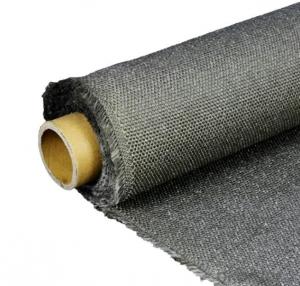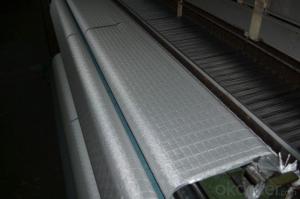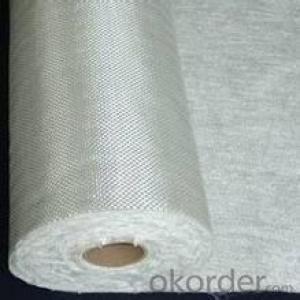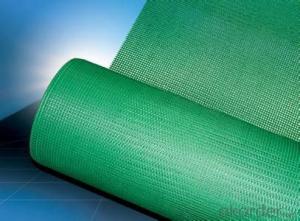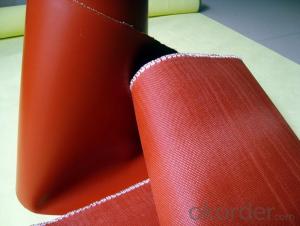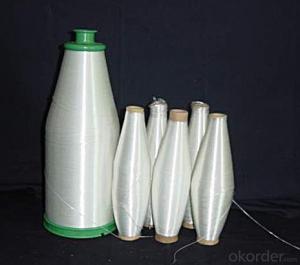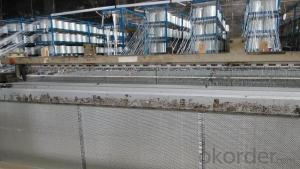Multi-Axial Fiberglass Fabrics Manufacturing
- Loading Port:
- Shanghai Port
- Payment Terms:
- TT or LC
- Min Order Qty:
- 10000 M2 m²
- Supply Capability:
- 50000000 M2 Per Year m²/month
OKorder Service Pledge
OKorder Financial Service
You Might Also Like
Introduction of Multi-axial Fiberglass Fabric:
E-Glass multiaxial fiberglass fabric is made of e-glass direct roving parallel aligned in 0º, 90º, +45º, -45º, then stitched with or without a layer of chopped strand mat.
Each layer is typically oriented in one of four directions; Standard configurations offered by multiaxial fabric suppliers include biaxial(0º, 90º), double bias(+45º, -45º), triaxial.
Fiberglass Biaxial Fabric for hand lay-up process Glass fiber Multiaxial Fabric warp(0º, +45º, -45º), triaxial weft(90º, +45º, -45º) and four axial (0º, 90º, +45º, -45º).
It’s compatible with UP, Vinyl Ester and Epoxy etc, used in GRP pultrusion process, hand lay-up process and RTM process etc, out-made products include GRP boats, automobile parts, wind energy bl E-ades etc.
Advantages of Multi-axial Fiberglass Fabric:
Mechanical property of different directions is adjustable.
The multi-layers structure could simplify forming process, improve operation efficiency.
Quickly wet-out, good molding property, easily to delete air bubbles.
Specification of Multi-axial Fiberglass Fabric:
Specs | 0ºg/m2 | 90º | +45º | -45º | Mat | Total Weight |
| EMF400/800(0º, 90º) | 400 | 400 | 400 | 1200 | ||
| EMF1200(0º, +45º, -45º) | 400 | 400 | 400 | 1200 | ||
| EMF800(0º, 90º, +45º, -45º) | 200 | 200 | 200 | 200 | 800 | |
| EMF450/800(0º, 90º, +45º, -45º) | 200 | 200 | 200 | 200 | 450 | 1250 |
Packing of Multi-axial Fiberglass Fabric:
Each roll is packed in a polyethylene bag inside, then outside with a cardboard box, then on pallet.
Storage of Multi-axial Fiberglass Fabric
In dry and cool places. The best condition is with temperature between 15°C and 35°C, with a relative humidity between 30% and 70%. Before use, please keep it in original package
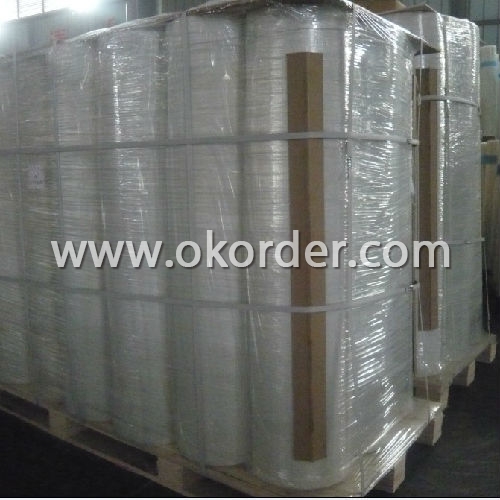
- Q: How is fiberglass fabric used in the marine industry?
- Fiberglass fabric is extensively used in the marine industry due to its unique properties and versatility. It is primarily used for boat building and repair, offering exceptional strength, durability, and corrosion resistance. In boat building, fiberglass fabric is used to create the hull, deck, and other structural components of the boat. It is typically combined with resin, forming a composite material that is lightweight yet incredibly strong. The fabric is laid in layers, impregnated with resin, and then cured to form a rigid and robust structure. One of the key advantages of fiberglass fabric is its ability to withstand the harsh marine environment. It is highly resistant to water, chemicals, and UV radiation, making it ideal for boats that are constantly exposed to saltwater and sunlight. This resistance significantly reduces the maintenance and repair costs associated with marine vessels. Fiberglass fabric is also used in the repair and restoration of boats. It can be applied to damaged areas, providing structural reinforcement and restoring the integrity of the vessel. The fabric can be easily molded and shaped to fit the specific contours of the boat, ensuring a seamless repair. Additionally, fiberglass fabric is used for the production of marine accessories and equipment. It is commonly used to manufacture boat seats, storage compartments, and panels due to its lightweight nature and ability to resist moisture and corrosion. Overall, fiberglass fabric is a crucial material in the marine industry. Its strength, durability, and resistance to the marine environment make it an ideal choice for boat construction, repair, and various marine applications.
- Q: Is fiberglass fabric suitable for making car covers?
- Yes, fiberglass fabric is suitable for making car covers. It is known for its durability, strength, and resistance to heat and chemicals, making it an excellent choice for protecting vehicles from various environmental elements such as UV rays, rain, and dust. Additionally, its lightweight nature allows for easy handling and storage of the car cover.
- Q: How is fiberglass fabric used in the production of composite materials?
- Fiberglass fabric is used in the production of composite materials as a reinforcement material. It is typically combined with resin to create a strong and lightweight composite structure. The fabric provides strength and durability to the composite material, making it suitable for various applications such as aerospace, automotive, and construction industries.
- Q: What kind of fiberglass fabric and asphalt paint do you use for 5mm thick fiberglass?
- 5mm's best use of thick asphalt paint (crown card) with 0.4 mm glass fiber cloth, at least five cloth six oil, the cost is more expensive,
- Q: Can fiberglass fabric be used for insulation in transportation vehicles?
- Fiberglass fabric can indeed be utilized to insulate transportation vehicles. It is a highly sought-after option for insulation across various sectors, including automotive and aerospace. This material boasts exceptional thermal insulation capabilities, which are critical for maintaining a comfortable and regulated atmosphere within these vehicles. Furthermore, fiberglass fabric is lightweight, flexible, and easy to install, rendering it suitable for application in diverse areas of transportation vehicles, such as walls, floors, and ceilings. Its usage aids in reducing heat transfer, minimizing noise transmission, and enhancing energy efficiency. Additionally, fiberglass fabric exhibits fire-resistant properties and possesses a high melting point, ensuring the safety and dependability of its insulation in transportation vehicles.
- Q: What are the different fiberglass fabric finishes for chemical resistance?
- There are several different fiberglass fabric finishes available that provide chemical resistance. These finishes are designed to protect the fiberglass fabric from the effects of various chemicals, making it suitable for use in industries where exposure to corrosive substances is common. Some of the different fiberglass fabric finishes for chemical resistance include: 1. Vinyl finish: This finish involves treating the fiberglass fabric with a vinyl resin coating. Vinyl is known for its excellent resistance to many chemicals, including acids, alkalis, oils, and solvents. The vinyl finish creates a barrier between the fabric and the chemicals, preventing them from causing damage or degradation. 2. Fluoropolymer finish: Fluoropolymer finishes, such as PTFE (polytetrafluoroethylene) or FEP (fluorinated ethylene propylene), offer exceptional chemical resistance. These finishes create a non-stick surface that repels most chemicals, making them ideal for applications where the fabric may come into contact with aggressive substances. 3. Neoprene finish: Neoprene is a synthetic rubber known for its excellent resistance to oils, acids, alkalis, and solvents. Fiberglass fabric with a neoprene finish can withstand exposure to a wide range of chemicals without deteriorating or losing its structural integrity. 4. Polyurethane finish: Polyurethane finishes provide good chemical resistance and also offer additional benefits such as improved abrasion resistance and flexibility. This finish is often used in applications where the fabric needs to withstand exposure to chemicals and physical wear and tear. 5. Silicone finish: Silicone finishes provide excellent resistance to high temperatures and a wide range of chemicals. They create a protective layer on the fiberglass fabric that prevents chemical attack and degradation, making it suitable for use in environments with aggressive substances or extreme conditions. It is important to note that the choice of fiberglass fabric finish for chemical resistance depends on the specific chemicals it will be exposed to and the operating conditions of the application. Consulting with a knowledgeable supplier or manufacturer can help determine the most appropriate finish for a particular chemical-resistant fiberglass fabric.
- Q: How is fiberglass fabric used in the environmental industry?
- Due to its unique properties and benefits, fiberglass fabric sees widespread use in the environmental industry for a range of applications. One notable use is in air filtration systems, where the fabric's strength and durability make it an ideal material for manufacturing effective filters that can trap and remove particles, pollutants, and contaminants from the air. Additionally, fiberglass fabric finds application in the construction of wastewater treatment plants and water filtration systems. Its resistance to corrosion, non-reactivity with chemicals, and impressive tensile strength make it suitable for manufacturing pipes, tanks, and other components that are exposed to harsh chemicals or corrosive environments. It is also utilized as a reinforcement material in the construction of water tanks and reservoirs, ensuring their structural integrity and preventing leaks or damages. Furthermore, fiberglass fabric is employed in the environmental industry for the production of geotextiles, which serve various purposes such as erosion control, soil stabilization, and land reclamation. The fabric's high porosity and permeability allow water to pass through while retaining soil particles, effectively preventing erosion and maintaining soil stability. Moreover, fiberglass fabric plays a role in producing insulation materials used in the construction of environmentally friendly buildings and energy-efficient structures. Its excellent thermal insulation properties help reduce energy consumption by preventing heat transfer through walls, roofs, and other building components. In summary, fiberglass fabric is of significant importance in the environmental industry, providing solutions for air and water filtration, erosion control, insulation, and corrosion-resistant infrastructure. Its versatility, durability, and eco-friendly characteristics make it a favored choice for numerous environmental applications.
- Q: Can fiberglass fabrics be used for automotive applications?
- Certainly, automotive applications can indeed make use of fiberglass fabrics. Fiberglass fabrics possess notable characteristics such as high strength-to-weight ratio, durability, and resistance to heat and chemicals. These qualities render them appropriate for a variety of automotive uses like reinforcing body panels, constructing interior components, and creating structural reinforcements. By molding and shaping fiberglass fabrics, specific automotive parts can be easily accommodated, providing both strength and stability while simultaneously reducing weight. Moreover, the thermal insulation properties of fiberglass fabrics make them highly suitable for employment in automotive exhaust systems and engine compartments. All in all, fiberglass fabrics bring forth numerous advantages in terms of performance, durability, and design flexibility, thus proving their suitability for a wide array of automotive applications.
- Q: Can fiberglass fabric be used for reinforcement in pharmaceutical tanks?
- Yes, fiberglass fabric can be used for reinforcement in pharmaceutical tanks. It is a common choice due to its strength, durability, and resistance to corrosion and chemicals. Additionally, fiberglass fabric is lightweight and easy to handle, making it suitable for various industrial applications, including pharmaceutical tank reinforcement.
- Q: Can fiberglass fabric be used for gaskets?
- Gaskets can indeed be made using fiberglass fabric, which is highly utilized across various industries such as automotive, aerospace, and manufacturing. This is primarily due to its exceptional strength, durability, and resistance to both chemicals and extreme temperatures. These remarkable characteristics of fiberglass fabric render it suitable for gaskets, which serve the purpose of preventing leaks and ensuring a tight seal between two surfaces. By cutting and shaping the fiberglass fabric, one can easily achieve the desired gasket size, and further improve its sealing capabilities by impregnating it with adhesives or coatings. Moreover, the lightweight and flexible nature of fiberglass fabric enables it to conform to irregular surfaces and effectively provide a secure seal. Given its versatility, fiberglass fabric is an excellent choice for gaskets in a wide range of applications.
1. Manufacturer Overview
| Location | Shandong, China |
| Year Established | 2002 |
| Annual Output Value | Below US$1 Million |
| Main Markets | North America; South America; Eastern Europe; Southeast Asia; Africa; Oceania; Mid East; Eastern Asia; Western Europe; Central America; Northern Europe; Southern Europe; South Asia |
| Company Certifications | ISO 9001:2000 |
2. Manufacturer Certificates
| a) Certification Name | |
| Range | |
| Reference | |
| Validity Period |
3. Manufacturer Capability
| a) Trade Capacity | |
| Nearest Port | Qingdao Port |
| Export Percentage | 81% - 90% |
| No.of Employees in Trade Department | Above 10 People |
| Language Spoken: | English; Chinese; |
| b) Factory Information | |
| Factory Size: | Above 10,000 square meters |
| No. of Production Lines | Above 10 |
| Contract Manufacturing | Design Service Offered; Buyer Label Offered |
| Product Price Range | High; Average |
Send your message to us
Multi-Axial Fiberglass Fabrics Manufacturing
- Loading Port:
- Shanghai Port
- Payment Terms:
- TT or LC
- Min Order Qty:
- 10000 M2 m²
- Supply Capability:
- 50000000 M2 Per Year m²/month
OKorder Service Pledge
OKorder Financial Service
Similar products
Hot products
Hot Searches
Related keywords
